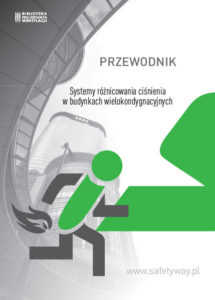Effective communication on site versus process planning – how to avoid delays on site

Autor

Marcin Kępa
Director of the Implementation Team in the company SMAY Sp. z o.o.
Effective communication during the construction process is one of the major factors affecting the final outcome of a task, i.e. the completion of a construction project. It applies to every area of implementation: the earthworks, construction of a building structure and system assembly. As participants in this process, we receive dozens of various notices and e-mails, hold dozens of meetings both by phone and in person every day. We have to go through a large number of documents and reports. On top of that, we require engineering knowledge and need to be familiar with the building code. With such a great amount of data and information to process it is very easy to make a mistake.
Proper communication at every stage of the construction process and fostering good relations that allow not only to limit the number of mistakes that cause delays in the project implementation, but also to make difficult and challenging decisions more quickly. It is the fast, efficient and detailed communication that facilitates cooperation at every stage of the project implementation and at every level of the hierarchy, regardless of whether these are relations between the investor and the general contractor or at lower levels – between subcontractors and additional contractors (the so-called sub-subcontractors). Delays on site are a nuisance to everyone.
“Very often, when we talk to each other, we listen to our arguments, but we do not actually hear each other out.”
Communication on site. A complex structure on site and conflicts about whose decisions are the most important
Recently, it has become very trendy and popular to create job positions in the investment process which are not directly supported by the building code. These are: project managers, contract managers, managers and coordinators. Who should report to whom then? Who should make final decisions and plan the construction process? The contract director who assumes no responsibility (unlike the site manager) and who quite often imposes their decisions on the site manager, while taking into account their own guidelines and objectives? Or maybe a site manager, i.e. a captain in charge of their team consisting of individual contracting companies? Additionally, there are the HSE services that oversee the safety of the construction process participants. They also report to the site manager. At this point, on-site communication becomes a very important aspect of any project. Communication may cause delays on site.
We know from practice that there is no clear and simple answer to the above questions. Multiple hierarchies and unclear decision-making processes cause many mistakes and hinder the execution of contracts. In the context of the building code, the most important person are simply the site manager and managers in charge of individual types of works. These are the persons who are held the most responsible from a legal standpoint. They also bear the risk of many fines provided for by the legislator in the event of any malpractice.
What are the origins of the site manager function and why is it so important? It results mainly from the FIDIC procedures implemented by the International Federation of Consulting Engineers. The implementation of these procedures into the national construction processes started after the accession to the European Union, when due to the EU regulations in force, it was required to apply these procedures when implementing investment projects financed with the EU funds. At that time, the process of implementing international procedures into the principles of investment project management started and new participants who had previously not been involved in the construction process were introduced. However, the new participants were not (and still aren’t) authorized by the construction regulations.
Therefore dozens of meetings, hundreds of e-mails and countless letters that are supposed to motivate individual entities to work “faster” (but not necessarily “better”) — as well as constant competition between individual groups and managers — cause that very often, when we talk with each other, we listen to our arguments, but actually we do not hear each other out. Additionally, there is stress resulting from tight deadlines and excessive amounts of work. As a result, the structure of the construction process may seem ideal in theory and its captain (and at this point I leave it for you to discuss who in fact the captain is) cause more and more confusion and mistakes.
It is often said that Industry 4.0 — along with industrial revolution — is merely a catchphrase used for marketing purposes while businesses supporting its implementation within factories make a fortune selling computer systems that monitor and manage resources. Reportedly, the costs are through the roof while the returns remain unrealistic. There is some truth to all of that. Creating a network spanning all machines, workstations and computer stations, as well as collecting hundreds or even thousands of unnecessary or misinterpreted pieces of data does not guarantee measurable benefits. Excessive automation is also easy to overestimate. When new technologies are introduced, there are always people claiming that the old ways were better. Some also claim that we simply lack the knowledge and skills to properly interpret and make use of the collected information. Every organisation’s approach to implementing the Industry 4.0 principles within its structures should therefore be well thought-out at the planning stage.

If the time and technology are not managed properly and the changes introduced are inadequate for the project, they hinder the work, i.e. cause delays on site.
Although we have at our disposal excellent programmes that create diagrams, schedules, graphs, we immerse ourselves in the BIM technology, completion dates are still quite often postponed, and there is not enough time provided for some essential items. It causes stress and delays at — as one could think — the final stage, which is the acceptance of the building. As a company, we often participate in these final stages of the construction process and we see how difficult it is to close the investment project at this stage when, generally, there should only be some formalities left to be finalised. However, insufficient communication during the entire construction process and too little time left for calibration of fire protection equipment cause many problems during the acceptance inspection. Many decisions are often made in the period between the building design and the completion of the construction process, the purpose of which is to either accelerate works or reduce the costs of the investment project. As a result, the building differs from the design. This may introduce many problems that were not accounted for at the time of introducing the changes. Therefore it is worth consulting all the intentions with the chief designer and discipline designer so as to enable them to foresee numerous consequences of the changes. Let’s remind ourselves of the butterfly effect — it also occurs in the construction industry.
Communication on site. More time shall be allocated to fire protection.
It happens quite often that the project acceptance date is postponed due to the missing occupancy permit to be issued by the State Fire Service because the fire protection equipment either malfunctions or has been installed incorrectly. Unfortunately, it is still believed in Poland that fire protection is a necessary evil imposed by the provisions of law and that it only generates additional costs for the investor. There are more and more well-informed investors who apply new solutions, such as CDF simulations, or work with professional design agencies. However, this area is often subject to the so-called cost optimization or is considered to be the last item on the agenda. At the end, the contractors usually do not know how to activate the systems. The systems are non-operational and the manufacturers of safety devices are held responsible.
Quite often too little attention is paid to the issues related to installation and calibration of fire protection systems during the construction process. And if these are non-operational, the State Fire Service cannot issue an occupancy permit and the building acceptance date is postponed.
There are countless anecdotes starting start with the words: “A fireman arrives at the construction site…” Panic is very common because we forget about fire protection systems but have a fire service inspection scheduled for the following day. The question is whether this is the right way. All we need is to provide more time for calibration of fire protection equipment, and should any problem arise, request support from the suppliers. Just as our company, they offer consulting services at every stage of the investment project: they verify the project in terms of correctness, modify it, optimize and calibrate the equipment before the acceptance inspection.
Dear participants in the investment process – since we spend so much time at weekly meetings and preparing daily and weekly reports, let us also ensure appropriate on-site reliability and communication as to respect the work of every group: not only bricklayers and plasterers, but also fitters and commissioning teams that want to sign the reports confirming the correct workmanship and good working order of the systems with a sense of full responsibility. I believe that it will guarantee the successful completion of every, even the most demanding task. And this in turn will translate into better financial results of the construction and a smaller number of structures that cannot be accepted on time.
Efficient communication on site equals the investment project completed efficiently.

Safety Way: an innovative differential pressure system – escape routes free from smoke and fire – highest degree of protection.
The Safety Way differential pressure system is a solution designed for multi-storey buildings:
• iSWAY-FC® differential pressure product for smoke and heat control systems;
• Innovative predictive algorithm;
• Anti-Frost system that endures even the most extreme weather conditions;
• 24-hour automatic test of all the components;
• Automatic adaptation to changing service conditions;
• Communication between individual components of the set and continuous tracking of all components (regulators, remote pressure sensors, etc.);
• Continuous measurement of the set value of static differential pressure between the protected and reference zones by the P-MAC(F) sensor.
Do you want to know more? Visit our BLOG. Our experts will provide you with a full knowledge base on ventilation and fire protection.
Do you need advice? Contact our advisor department.



